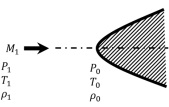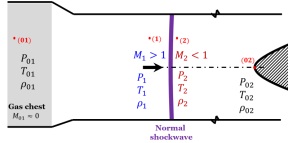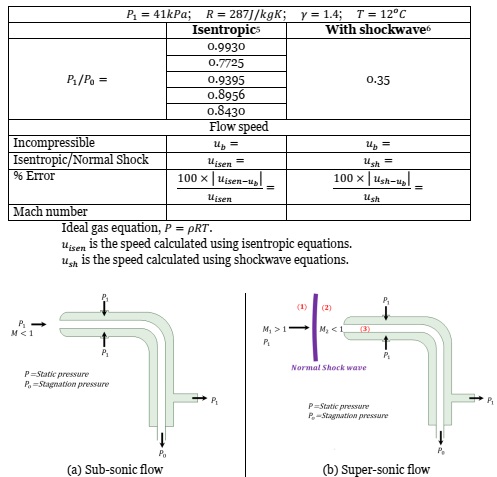Reference no: EM132590383
MP4583 Advanced Engineering Systems - University of Central Lancashire
Learning outcome 1: To develop and enhance research, investigative, evaluative and problem-solving abilities.
Learning outcome 2: To develop a rigorous approach to the inclusion of modelling limitations in the analysis and synthesis of systems.
Learning outcome 3: To investigate factors influencing the design and performance of a suitably complex engineering system.
Learning outcome 4: To integrate the fundamental principles associated with engineering systems.
Indicative Exercise:
1) What is a shockwave? Using suitable sketches, describe the following:
a. A normal shockwave
b. An oblique shockwave
c. An attached shockwave
d. A detached shockwave
2) Using the relevant isentropic assumptions, show that speed of sound is:
c = √(γRT) = √(γP/ρ)
3) Derive the respective expressions for the ratios of static to stagnation state properties1 of an isentropic flow over the immersed solid object in Fig. 1, as function of the approaching flow Mach number, M1.

Fig. 1: Isentropic flow over a solid object
4) Gas is delivered from the gas chest via a duct in Fig. 2. A section downstream the duct, the flow is known to experience a normal shockwave.

Fig. 2: Flow from a gas chest via a duct over a solid object
Without any derivations and using the regular notations in Fig. 2, list the relevant equations (Table 1) for the state ratios, ψn/ψ0n, as a function of Mn.
Table 1: Flow equations in a duct with shockwave

5) Describe a pitot-tube and discuss its applications.
6) Briefly compare the use of pitot-tube in the following applications, referring to the appropriate equations and sketching the flow zones4:
a. Sub-sonic flows
b. Supersonic flow
7) Figure 3 shows schematics of a pitot tubes in different flows. By the Bernoulli equation of an incompressible flow, the speed of the flow is obtained using ub = √2(P0 - P1)/ρ. What is the percentage error in using the Bernoulli's equation in the following conditions?

Prepare a 10 minutes slides seminar on any one of the following topics:
• Turbulence modelling in Supersonic flows
• Pneumatic Control systems
• Compressible flows in Nature
• Aerothermodynamics in Space vehicle in atmospheric re-entry
• Prandtl Meyer Flow
• The supersonic jet age: The race and the science
• Fluid Logic Control Systems
• Hypersonic machines
• Microfluidics
• Shockwaves
• Any topic of interest to fluid flow or gas dynamics.
Your audience is typical of those you will find in a TEDTalk8. As an indicative guide (in no order), your slides must give an appropriate introduction to the topic, areas of applications, some theoretical and numerical considerations or methods, classical and contemporary issues, the future, some academic results/data presentation, conclusions or commentaries.
You must cite and list a minimum of 10 good quality references (using the IEEE format). These are journals, conference papers and textbooks. Websites/forums do not count as high quality references but may be used when citing pictures.